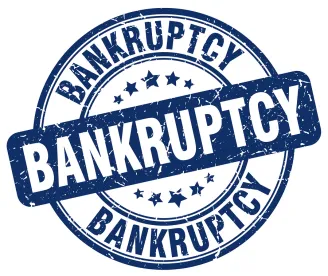Earlier this month, the United States Supreme Court agreed to review a Seventh Circuit decision regarding the scope of the so-called “safe harbor” from avoidable transfers provided in Section 546(e) of the Bankruptcy Code. Many in the U.S. bankruptcy industry expect that the Supreme Court granted certiorari to hear Merit Management Group, LP v. FTI Consulting, Inc., Case No. 16-784, in order to resolve a long-running split among the 2nd, 3rd, 6th, 8th, and 10th Circuits, on the one hand, and the 7th and 11th Circuits on the other.
The basic issue in Merit is whether Section 546(e) protects an otherwise-avoidable transfer made by or to a financial institution, whether or not the institution has a beneficial interest in the property transferred. Understanding how the Section 546(e) safe harbor protects certain transfers requires a familiarity with (a) fraudulent transfers under Section 547(b), which allows a debtor-in-possession or a trustee to avoid certain transfers made within 90 days of a debtor’s bankruptcy filing, and (b) fraudulent under both Section 548, which allows avoidance of constructively or actually fraudulent transfers made to or for the benefit of an insider of the debtor within two years of the bankruptcy filing, and Section 544 which incorporates state fraudulent transfer statutes.
Simplified, under Section 547(b), a trustee (or, as applicable, a debtor-in-possession) can avoid, or undo, transfers that the debtor made to or for the benefit of a creditor, on account of an antecedent debt, while the debtor was insolvent, and to the extent the creditor received more than it would have in a chapter 7 case. Under Section 548, and the analogous state fraudulent transfer statutes incorporated into bankruptcy cases by Section 544, a trustee (or debtor) can avoid a transfer made by the debtor with the intent to hinder, delay or defraud, or for which less than reasonably equivalent value was received in exchange.
A creditor may be entitled to utilize certain defenses against the avoidance of a transfer that is otherwise subject to Section 547(b) or the federal or applicable state fraudulent transfer statute. One such defense is that the transfer qualifies for one of the safe harbor protections provided in the Bankruptcy Code, such as the one contained in Section 546(e). Congress enacted the Section 546(e) safe harbor in part to mitigate disruption to financial markets resulting from bankruptcy filings. There is a public interest in ensuring that certain types of financial transactions will always settle, without threat of being unwound. Accordingly, Section 546(e) provides that transfers otherwise avoidable under Sections 544, 547 and 548 (among other sections) that were made by or to or for the benefit of a financial institution are not subject to avoidance (except for transfers made with actual intent to delay, hinder or defraud creditors).
In Merit, Valley View Downs, LP, a racing and gaming operator, acquired the stock of a competitor, Bedford Downs Management Corp., in order to obtain control of a Pennsylvania harness-racing license and open a racetrack-casino. The Cayman Islands branch of Credit Suisse financed the Bedford Downs sale as part of a larger series of transactions. One of the sellers of Bedford Downs’ stock, Merit Management, LP, received sale proceeds for its 30% ownership stake in two installments – one payment made at the initial close of the transaction in 2007 and a second payment of $16.5 million made in November 2010. The second payment, which is the subject of this case, was made to Merit via Citizens Bank of Pennsylvania, who acted as escrow agent for this portion of the transaction.
Valley View obtained the harness-racing license but failed to obtain a separate, needed gaming license, and was unable to open a casino to complete its business plan. As a result, Valley View filed for bankruptcy protection in Delaware in October 2009. The Delaware bankruptcy court ultimately confirmed a plan of reorganization that resulted in certain causes of action, including those for avoidable transfers, being contributed to a litigation trust for the benefit of creditors, with FTI acting as trustee.
In 2011, FTI commenced an action in the Northern District of Illinois to recover the 2010 escrow payment to Merit under either the Pennsylvania fraudulent transfer statute, pursuant to Section 544(b) of the Bankruptcy Code, or the Bankruptcy Code’s fraudulent transfer statute contained in Section 548.
The district court found that Merit could invoke the Section 546(e) safe harbor to protect the transfer because it had been conducted through qualifying financial institutions. The Seventh Circuit reversed, finding that Section 546(e)’s use of “by or to” and “(or for the benefit of)” are ambiguous and that the intent of the statute was not to allow the form of a transaction that flows through financial institutions to trump the “economic substance” of a transaction that was ultimately between two non-financial institutions. Accordingly, the Seventh Circuit held that Merit could not utilize Section 546(e).
The Seventh Circuit recognized that its decision represents a departure from the holdings of five other circuit courts. The Supreme Court is now poised to resolve this split. The Merit case is factually similar to another case out of the Second Circuit for which cert. has neither been granted nor denied yet. The outcome of these cases could have wide-reaching impact on Chapter 11 jurisprudence. Bankruptcy filings frequently occur in the aftermath of failed merger or acquisition transactions while those transactions are still within the timeframe for avoidable transfers. Furthermore, using an escrow agent or other financial institution as a conduit is commonplace in complex M&A transactions. If, for example, the Supreme Court upholds the Seventh Circuit decision in Merit, the availability of safe harbors to protect these transfers could be significantly reduced. Bankruptcy practitioners and transactional attorneys alike should therefore closely examine the Supreme Court’s ultimate decision in Merit.




 />i
/>i
